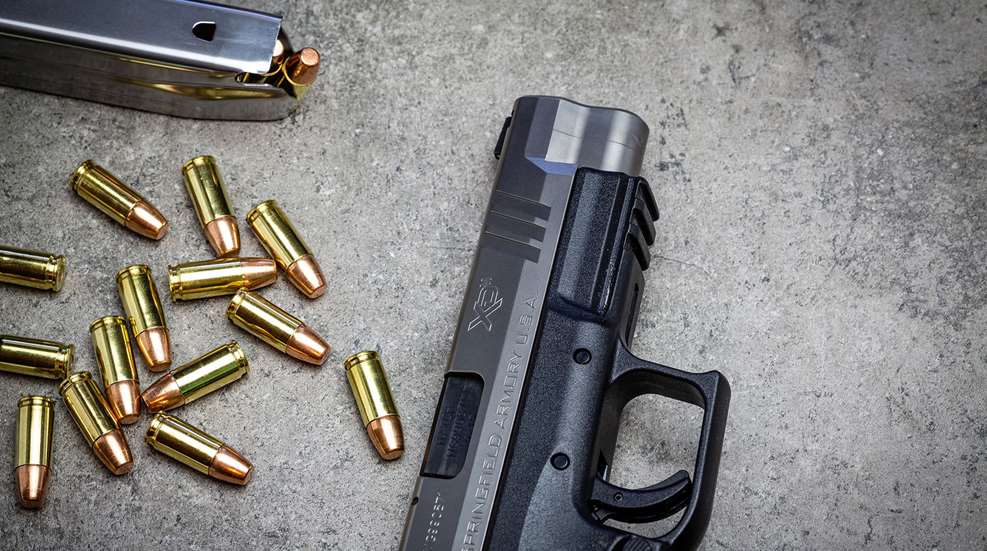
If you’re new to guns and new to buying ammo, you probably noticed on your first trip to the store that ammo comes in all kinds of varieties within the same chambering. And some of them are a lot more expensive than others! Why the difference?
Well, different ammo is for different purposes. When it comes to, say, 9 mm Luger ammunition, there are different bullet weights that correlate to different velocities and different energy, but the makeup of the projectile itself is what accounts for much of that price difference. There are two main categories: Practice ammo and defensive ammo.

Practice ammo is cheaper. In its simplest form, the bullet (the projectile that fires out of the casing and impacts the target) is just a hunk of metal lead nestled into a brass casing. This projectile typically has a soft core, usually made of lead, encased in a harder metal “jacket.” We call these full metal jacket (FMJ) rounds, and they are designed to retain a lot of their energy. This means that when a full metal jacket round hits flesh, it penetrates deeply and does not expand very much—basically punching holes straight through targets. This is a problem in defensive situations because for one thing, you don’t want rounds to keep going after they’ve hit their target, potentially hitting something you hadn’t intended. And secondly, lack of expansion means relatively less “stopping power” to the threat—a clean hole doesn’t do as much damage as a big, jagged tear. These rounds are inexpensive, which makes them ideal for target practice. But you don’t want to load them in your gun when you carry it for self-defense purposes.

Defensive ammo, on the other hand, typically features a hollow point. Jacketed hollow-point (JHP) bullets usually have a lead core with a hard outer jacket, but the jacket has a hole in the tip—a hollow point. This tip is designed to peel back upon striking flesh and let the bullet deform, turning into more of a mushroom or flower-petal shape. That does two things: First, it slows the bullet down, meaning you’ll have less risk of overpenetration, and second, it gives you more threat-stopping power by creating a larger, more catastrophic wound channel. These bullets are more complicated, and we all shoot fewer of them so the economies of scale aren’t as great for the manufacturer. Thus they are considerably more expensive than FMJ rounds.
In short, practice ammo is made to punch a clean hole and keep going. Defensive ammo is made to slow down and create maximum damage—this is exactly what you want when you are shooting to stop the threat in a self-defense situation. So while it’s OK and even preferable to buy the less expensive FMJ practice ammo to train with at the range, you should invest in a box of good JHP ammo to load in your self-defense gun when it’s time to carry it.
A word of caution: Not all JHP ammo cycles super reliably in all guns, and it doesn’t all penetrate to optimum depths. Some JHP ammo slows down so quickly that it doesn’t penetrate deeply enough to reach vital organs, making it much less effective. Consider buying from a big, well-known ammo brand that you know has done their research and ballistics gel testing so you can feel confident you’ll get the right balance of penetration and expansion. You should shoot your self-defense ammo out of your carry gun every now and then just to make sure it cycles reliably and hits where it should on paper, but you won’t be using very much of it at all, so you can afford to invest in a box of quality ammo you can trust with your life.















































